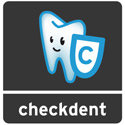Natrium fluoride, fluoride water, fluoride for teeth, fluoride toothpaste, flour … the list just goes on, but which claims are true?
First of all – fluorine is a very toxic gas of the halogen group. Fluoride ions, on the other hand, are needed by living beings and classified as trace elements or micronutrients.
–
––
The fluorides most often used are:
- Natriume fluoride (NaF, e.g. in fluoride tablettes or in some brands of toothpaste or mouthwash),
- Potassium fluoride (KF, in fluoridated table salt),
- Stannous(II)-fluoride (SnF2, sometimes used in toothpaste) or
- Amine fluoride (used in toothpaste and gels containing fluoride)
–
Only fluorides applied locally to an exposed tooth actually help to prevent cavities
–
As people have various sources of fluoride available to them (tablets, table salt, drinking water, toothpaste, fluoride gels, …) it is important to use these trace elements responsibly. Since there are many factors which affect the incidence of cavities, the use of fluoride alone is not enough to prevent the development and spread of cavities in the general population. Cavities do not indicate a fluoride insufficiency!
–
The following recommendations for the use of fluoride only include information which has scientifically proved to be useful!
–
Toothpaste
Using toothpaste which contains fluoride is an effective way to prevent cavities, and works even better if the level of fluoride in the toothpaste is high and you brush frequently.
–
Fluoride tablets
Fluoride tablets help to prevent cavities. But since this only works locally, they have to be chewed regularly. Only one type of comprehensive (systemic) fluoride intake (tablets or table salt) is recommended – see chart. Even table salt does not yield quite as much precise data as lozenges. Before giving fluoride tablets to children under six years of age, a fluoride anamnesis needs to be performed – a questionnaire is used to determine whether there is increased fluoride intake from other sources, so excessive intake can be avoided. Fluoride tablets are not taken during pregnancy, as they do not affect the incidence of cavities in milk teeth.
–
Fluoride finish
Applying a fluoride finish to the teeth helps to prevent cavities. This method can be used for children and adolescents two or more times a year, aside from other methods.
–
Fluoride gels
Applying a fluoride gel to the teeth helps to prevent cavities, aside from other local methods, assuming that the gel is not swallowed. The gel works no matter what method is used to apply it. The method used depends on the compliance of the patient and should be selected individually.
–
Mouthwash containing fluoride
If you have a very low incidence of cavities and good dental hygiene using toothpaste containing fluoride, use of mouthwash containing fluoride is not recommended. For persons with a higher risk of developing cavities, moderate use of mouthwash can prevent the spread of cavities and can thus be recommended aside from use of other fluoride products.





